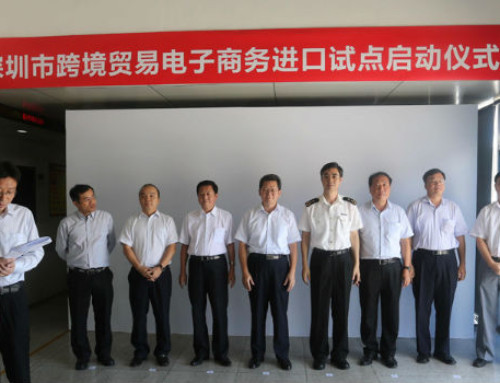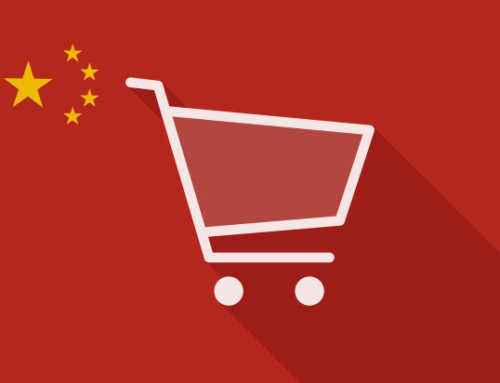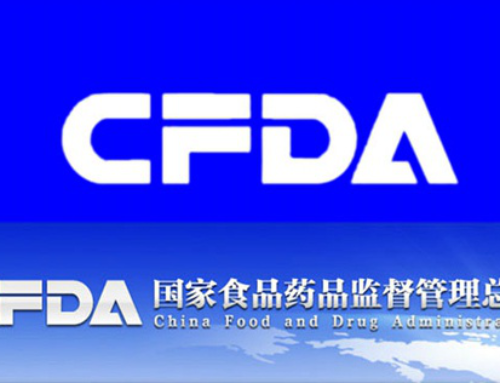When you think about China’s rising economic influence, its booming export economy is probably the first thing that crosses your mind. But China also has a booming market with huge potentials for foreign product – and that’s good news for foreign business who are planning to explore the potential in China. Depending on your industry, there is a good chance China’s thriving economy can work to your benefit, but exporting to China can be challenging if you are new to China market and have limited knowledge about it.

Here are 10 things you should take into consideration before you exporting to China.
1. Choose your HS Code
Harmonised System (HS) Codes is the international system used for categorising all products traded between countries. Whatever your product is, there is an HS Code for it. China Custom holds a complete list (www.hsbianma.com) which can be used to check product categories and understand import tax rates, required documentation, licences or testing. However, you can only find out so much from China Customs’ website. Public information on a given HS Code may be incomplete. Sometimes, it is only people in the industry (e.g. specialist import agents) that have an accurate understanding of what can be brought in, and under which HS Codes.
For any product, there may be a range of potential codes that could be used, and picking the right one is an important skill. For example: There may be different HS Codes for an item brought “in bulk”, and one brought in as a “finished product”; Different sizes, shapes, materials, even colours, can merit their own codes; Each HS Code category also tends to have an “Other” code that may cover some products in the category;
Choosing the correct HS Code is important because tax and documentation requirements vary from code to code. The onus is on the importer to prove to Customs, based on the detailed nature of the item, that the HS Code has been correctly applied.
2. Know Your Incoterm Obligations
Depending on how the goods you are importing are priced, the amount of work required at your home country and China ends varies. Therefore confirm the main tasks in advance, which the exporting (your home country end) and importing (China end) parties are respectively responsible for under the main Incoterms.
The most cost effective solution is often for the exporter to arrange shipping to the Chinese port of destination (i.e. quote CIF), then to contract the subsequent import services to an agent in China. But this does require hiring expertise locally to arrange for a shipping agent to get the goods successfully cleared through China Customs.
3. Choose an Export Price
If you are bringing your own product into China through a China subsidiary, then there can be some difficulty in setting the Export price. For example, choosing between the cost price, thereby leaving margins in the China business, and the sales price, thereby taking profits out of China. There may be other fees, such as design or royalty fees, that might be included in the cost of goods.
A key consideration in these questions is of course tax. A higher import price will generally increase the costs of import, through import duty, whereas a lower import price will keep more profit in your China subsidiary, leading to a higher corporation tax bill. It is important to understand that Chinese tax authorities will have an expectation of the profitability of a foreign-owned Chinese subsidiary. Furthermore, given the difficulty of obtaining financing for foreign-owned entities in China, it is crucial to plan for sufficient cash to support a China subsidiary.
A few key guidelines to follow:
- The bottom line is use a price that represents a true and authentic cost price to the importing entity;
- Start as you intend to continue. Importing the same item again at a significantly different price will be challenged by Customs. Customs keep a record of all historic prices per HS Code, so significant swings by the same importer will be flagged up;
- Thorough financial planning is key; figure out what level of costs and income the business will have, and use such data to inform pricing decisions;
- Another thing to bear in mind is that since 2014, the State Administration of Foreign Exchange (SAFE) has started rejecting overseas payments for imported goods more than three months after goods were imported. Therefore, it is important to plan payments in time, to avoid money getting orphaned in China.
4. Choose a Port
The ability, speed, and cost of importing goods can vary considerably by port. Therefore, choice of port may not necessarily be decided just by proximity or transport links to the end user. It is not uncommon for importers to import through a port where they or their clearance agents have established processes and relationships, then trucking goods a considerable distance to market. In some cases, this may be as extreme as transporting goods by bonded truck from a seaport to a landlocked city inland to clear customs there.
There are no hard and fast rules regarding which ports to use, and which to avoid. It depends on product category and local practices, and in most cases proximity will trump other considerations. However, the single most important decision you will make regarding your exportation is choosing the right customs clearance broker, and they may be tied to a particular port, in which case a detour may be the best choice.
5. Working with Customs Clearance Brokers/Agents
This is the most important decision to make, and key to making the export process go smoothly. Customs clearance is a localized business in China. Typically, clearance brokers have two areas of expertise: product category; and locality. There are certain agents that are very good at certain product categories and those that have particular strong networks in a certain port, or even both (e.g. cosmetics in Shanghai). Do not assume the customs brokers attached to your freight forwarders are the right ones for the job. You need a recommendation from someone in your industry to find the most appropriate customs broker.
Here are some tips to finding the best customs broker for your import order:
- Find out from industry peers who they have used that got the job done. Network within the industry until you get an introduction to the right outfit;
- Engage a customs broker who is legally registered with Customs and who is AA or A certified. Regional customs classify the local brokers from AA to D;
- Find a customs broker with good relationships with Customs. To look up details for any customs broker you can search on this Chinese Customs web-tool: http://www.customs.gov. cn/publish/portal0/tab9408/;
- Have independent brokers in your key import regions, and do not rely on the same broker for all points of entry. Requirements vary across the country and only local brokers will be able to offer you the best advice and services.
Import Brokers can be classified into the following classes:
- AA-A: Outstanding compliance records and receive excellent treatment from Customs.
- B: In good standing and receive ordinary treatment from Customs.
- C-D: In poor standing and subject to strict conditions by Customs.
6. Get the Documents Right
Thoroughly preparing the documents required to clear customs is the only way of getting goods through customs without incurring delays and storage charges. There are three levels of documentation to be aware of:
- Importing Entity Documentation: These are the registration documents of the company importing the goods (the importer of record), including business licence and tax registration certificate.
- Goods Documentation: These must be prepared by the exporter and sent to the importer in China as early as possible.
- Exceptional Documentation: This is where companies commonly get stuck, and it includes category-specific documentation that you must check in advance. This is a large, mixed bag of items, including: hazardous goods certificates; certificate of origin; quality certification; product manual; and letters of credit. It is important for exporters to understand from customs brokers exactly what is required for your product.
To get documentation right, there are a couple of important factors to consider:
- You need a very good person in your company to translate English into Chinese for your products. Every business has its own “internal language” or jargon. Translating this into Chinese is your responsibility; do not rely on the import agents.
- There is a steep learning curve for the exporters, whether they are independent suppliers, or your own company in the UK. They need to learn a China-specific way of preparing documents. Many shipments will not clear without a Certificate of Origin (C/O). If you are using airfreight, any delay in getting the C/O will lead to very expensive customs-warehouse charges.
- Another thing to bear in mind is that be aware of Wooden Packaging! This is a relatively minor detail, but it often seems to get missed, and causes unexpected delay and expense. Chinese port customs regularly require that goods with wooden packaging be fumigated. As this includes wooden pallets and crates, this can end up encompassing many goods, even if they themselves are not wood, or packaged in wood. Consider alternative plastic packaging, or allow for extra time and expense if wood is unavoidable.
7. Clearing Customs
Once you have your documents, it is time for the customs application. The General Administration of Quality Supervision, Inspection and Quarantine (AQSIQ, commonly known as ‘Customs’) is responsible for inspecting and supervising the import of most product categories. Customs operate on a policy based on “inspection application first, customs declaration second”. The process generally is as follows:
- Application for inspection.
- Acceptance by Customs.
- Quarantine and inspection by Customs.
- Insurance of certificate and goods release for goods passed; Quarantine treatment notice for goods not passed.
8. Time it Right
When it comes to importing goods into China, you have to plan for:
- The Known. Public holidays such as Chinese New Year and National Day can be anticipated. Your goods must be planned to arrive three weeks before or after. The airlines shut down air freight to China, so when the holiday is over, there is a massive backlog of airfreight, and at Customs. These periods must be noted and factored in to any delivery promise.
- And the Unknown. This refers to China’s political timetables. Some of these, such as the annual ‘Two Meetings’ do follow a set pattern, but many, such as political campaigns or ‘Victory Day’ in 2015, are almost impossible to anticipate. This can impact customs clearance.
- Also take into consideration shipping times when planning ahead. Sea freight typically takes 30-45 days from Europe to China, while air freight is significantly quicker at three to seven days. Avoid shipping via sea freight at the start of January, only to find out the expected date of arrival is Chinese New Year. Avoid guaranteed delivery dates to clients, because these can end up very expensive. Not only do you have to compensate clients for late delivery, but Customs charges you for storage of goods as well.
9. Free Trade Zones (FTZs)
This presents a relatively new opportunity for bringing goods into China. However, there are a couple of points to note:
- FTZs do not represent a ‘back door’ means of bringing goods into the market. To get goods from the FTZ into the ‘mainland’ they still need to go through regular import channels;
- Goods can be held in the FTZ close to end markets for up to 30 days before customs clearance procedures (and tax) need to be completed. This is of particular appeal to companies with significant inventory (e.g. online retailers) who can import products, hold them in the FTZ pre-sale, and complete the full import once the goods are sold.
10. Finding Support
Third-Party Logistics Providers (3PL) are firms that provide logistics services for importers in a certain area, including: transportation; warehousing; cross-docking; inventory management; packaging; and freight forwarding. Fourth-Party Logistics Providers (4PL) target management of the entire supply chain process and offer comprehensive strategic solutions. 4PLs are usually general contractors that manage other 3PLs.
You can also find good third-party agents that can help import goods and sell to distributors and customers in China, acting as a trusted conduit between your company and the market in China.
Conclusion
China represents an attractive market for foreign companies. Many are drawn by the opportunity, and set up an entity there or appoint an agent to enable them to supply the market locally. This brings with it the challenge of having to deal with Chinese Customs, in order to get goods to market. So make sure you have taken above 10 things into consideration before you export goods to China, so you can increase your chance of success and make your exporting efforts go smoothly in China.
Related reading: Start Your Business in China: If Not NOW, Then When?












